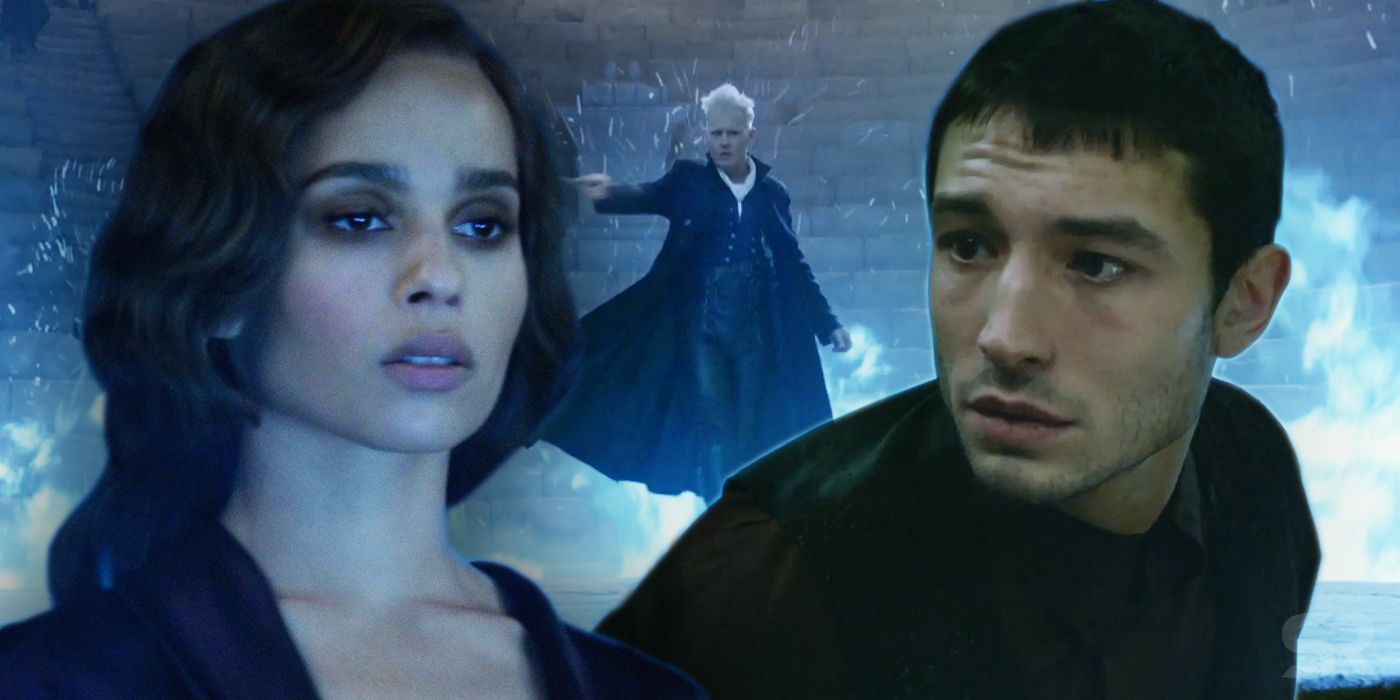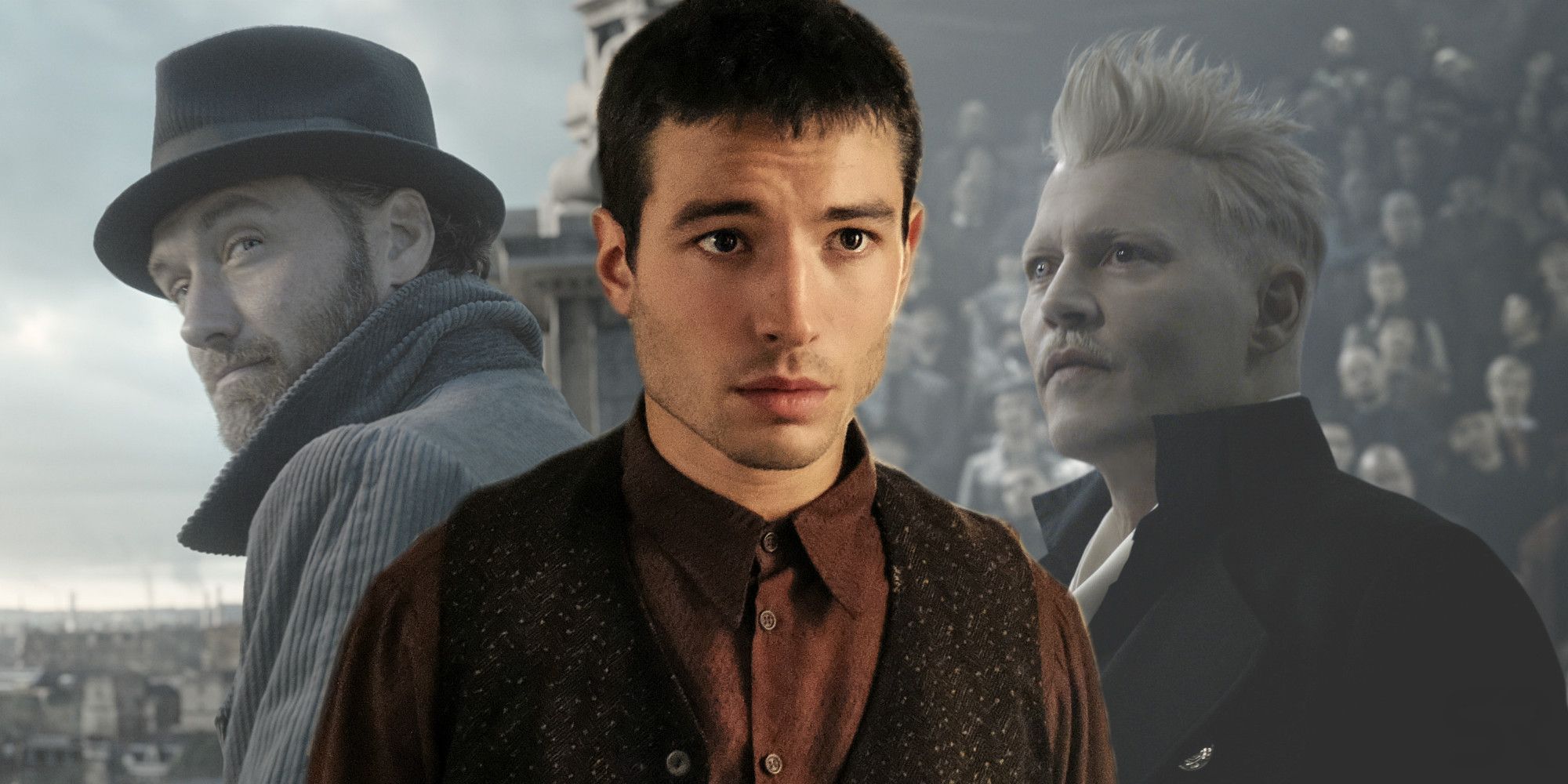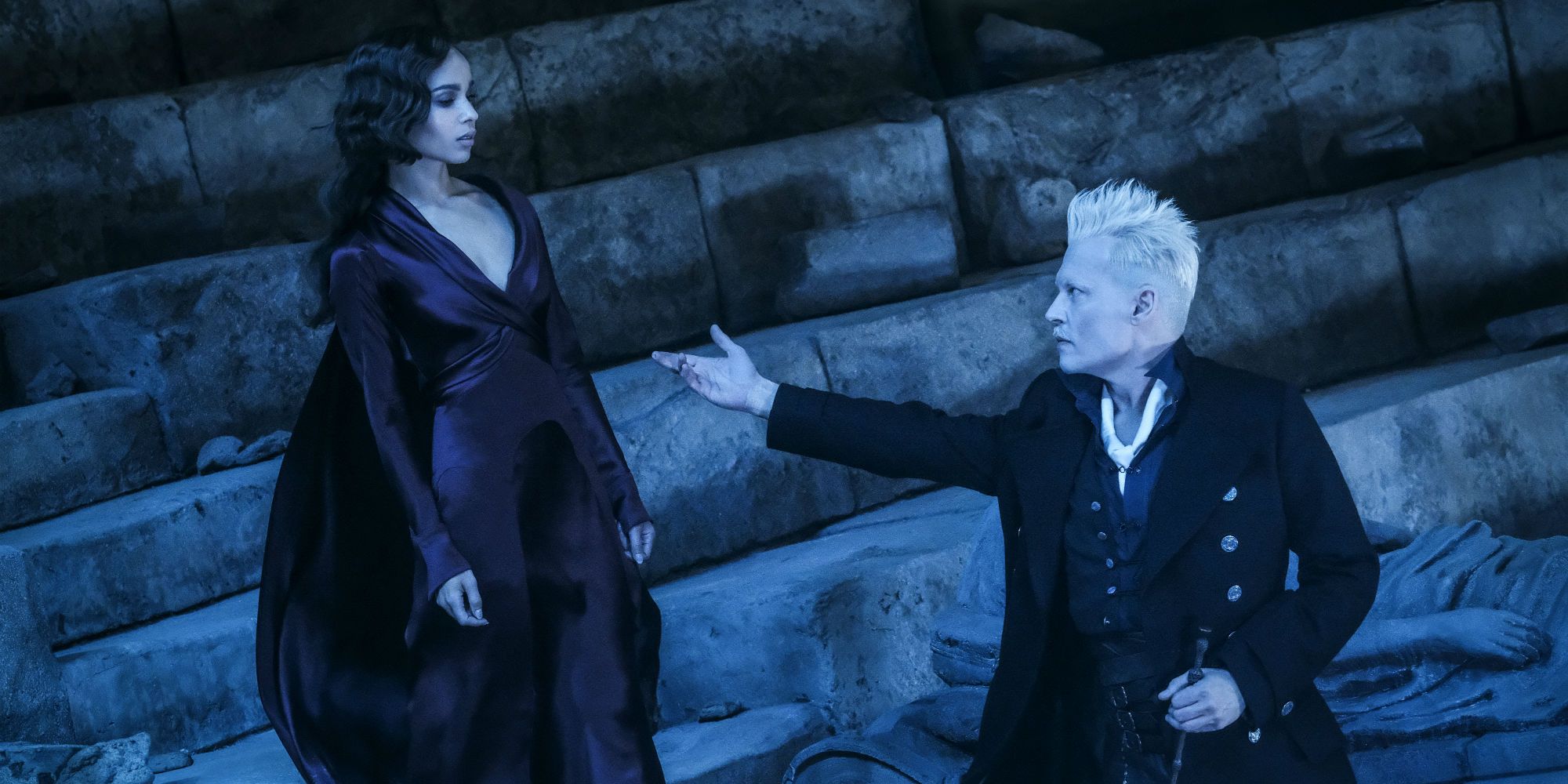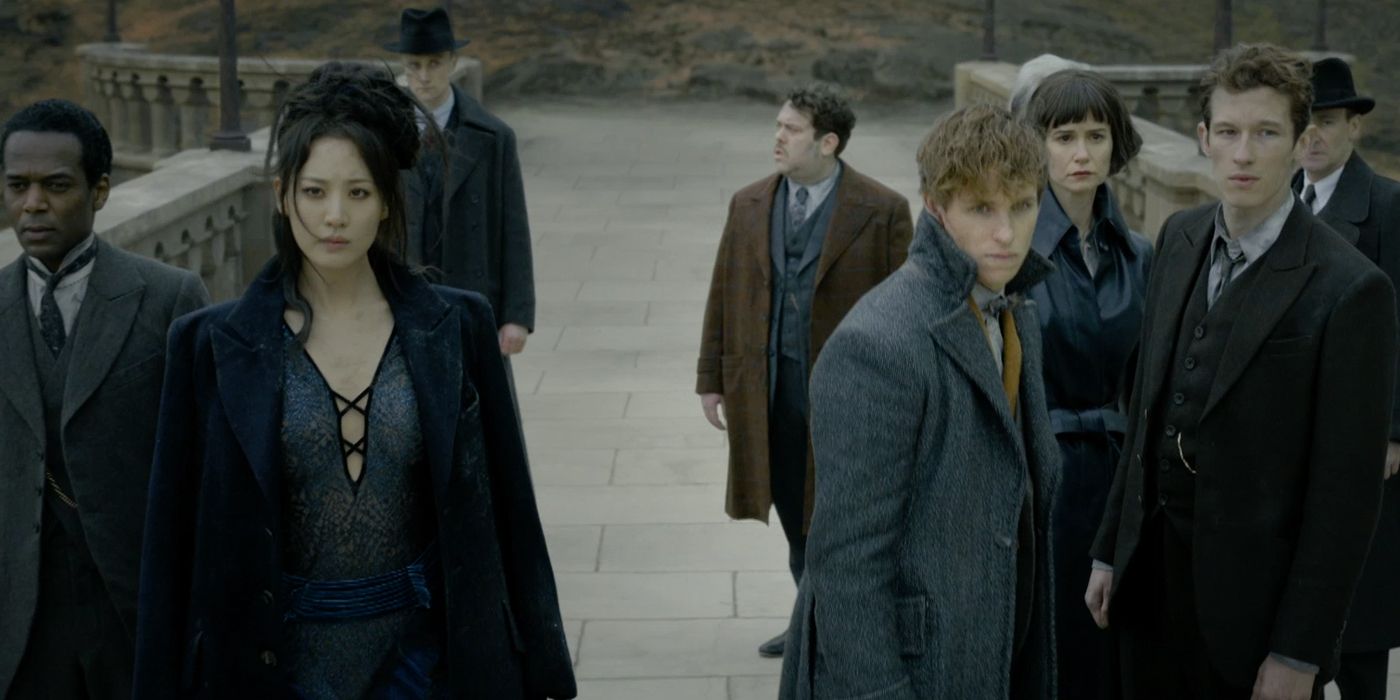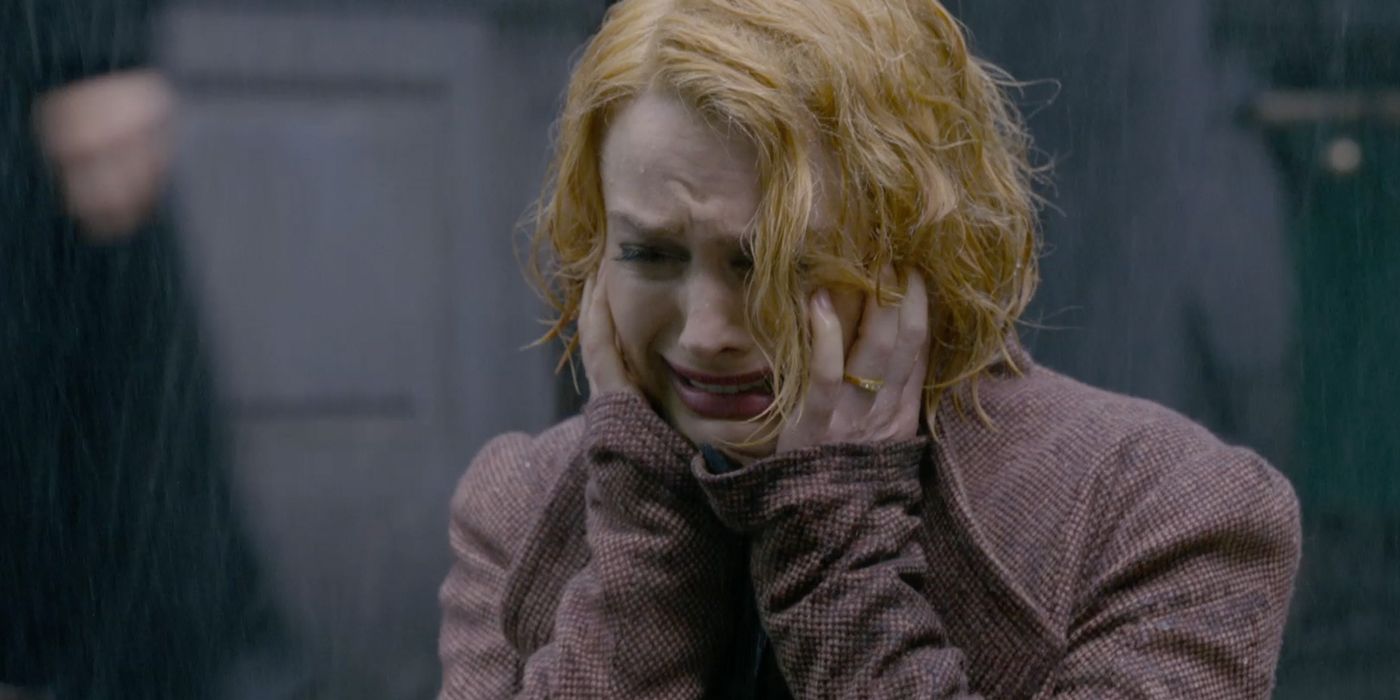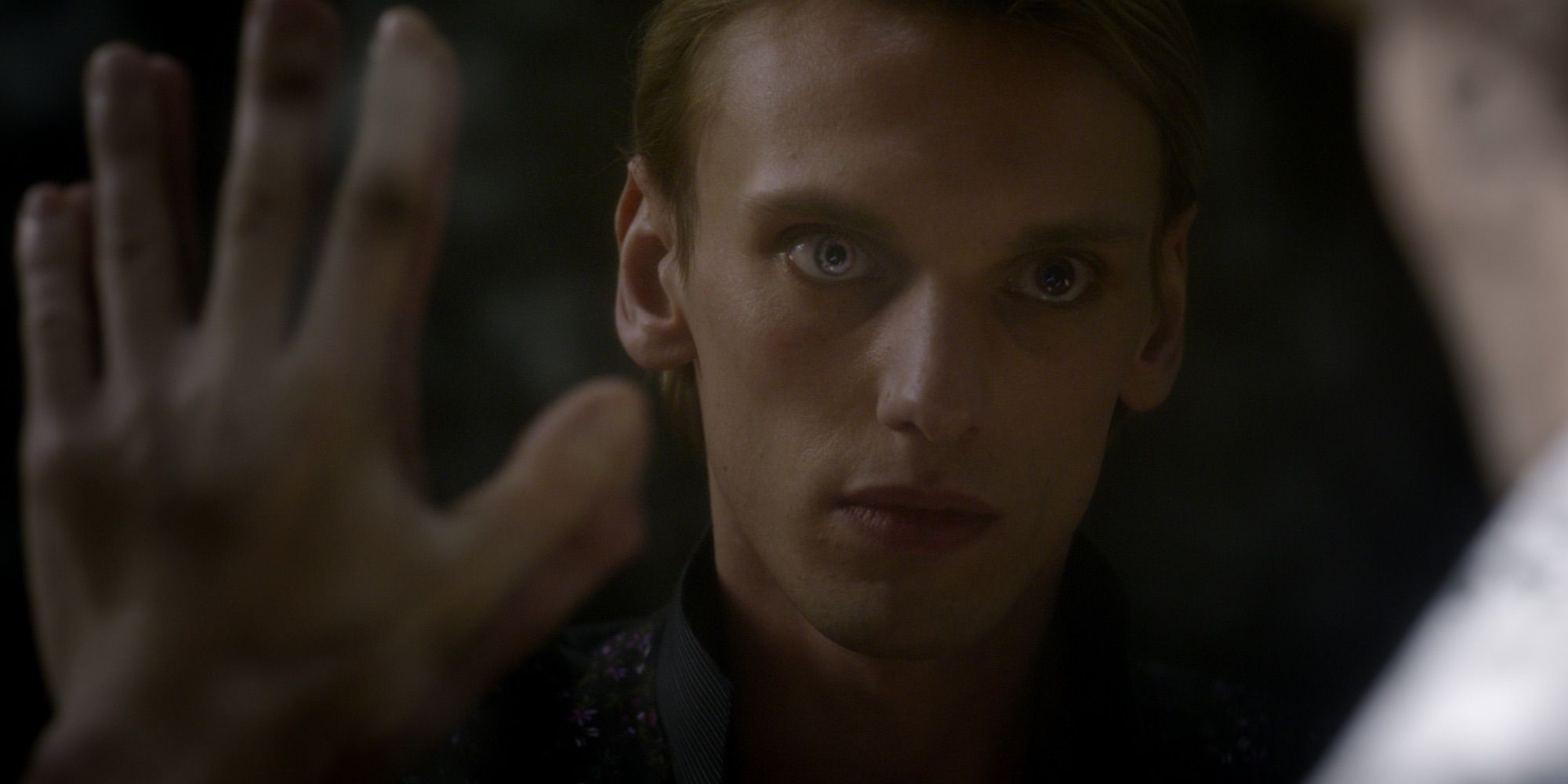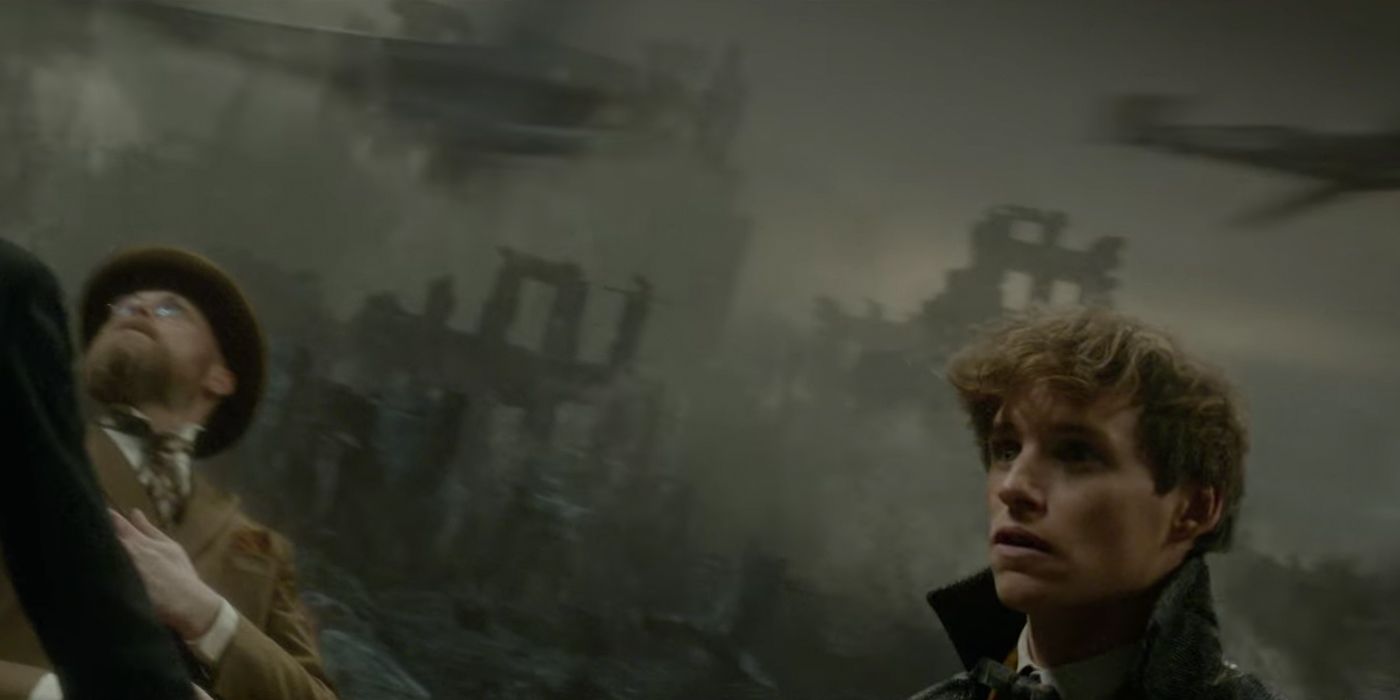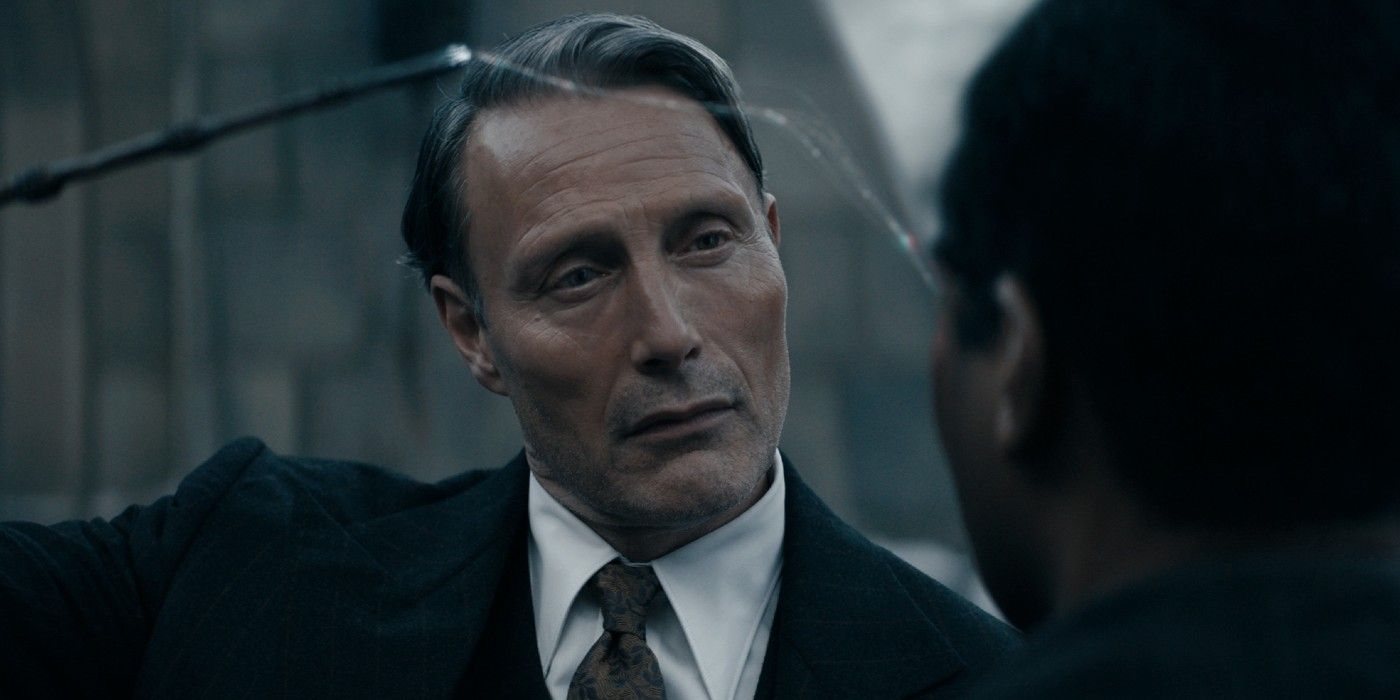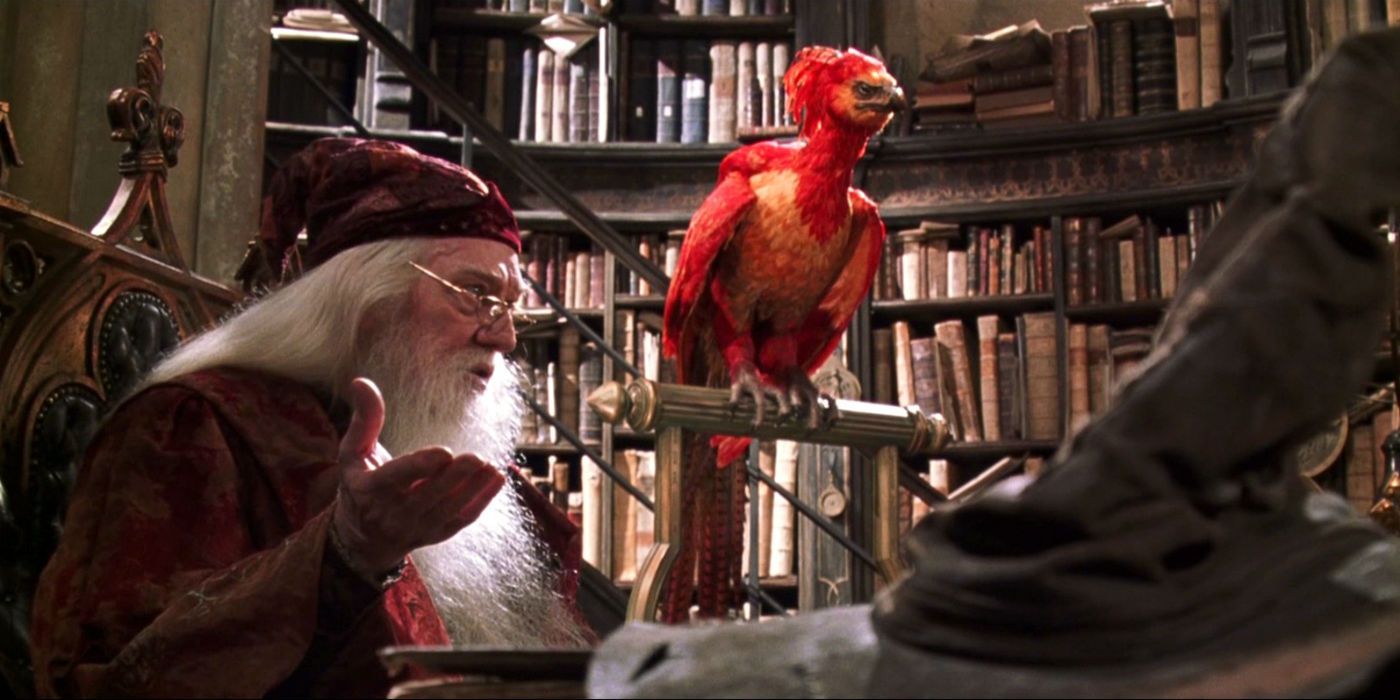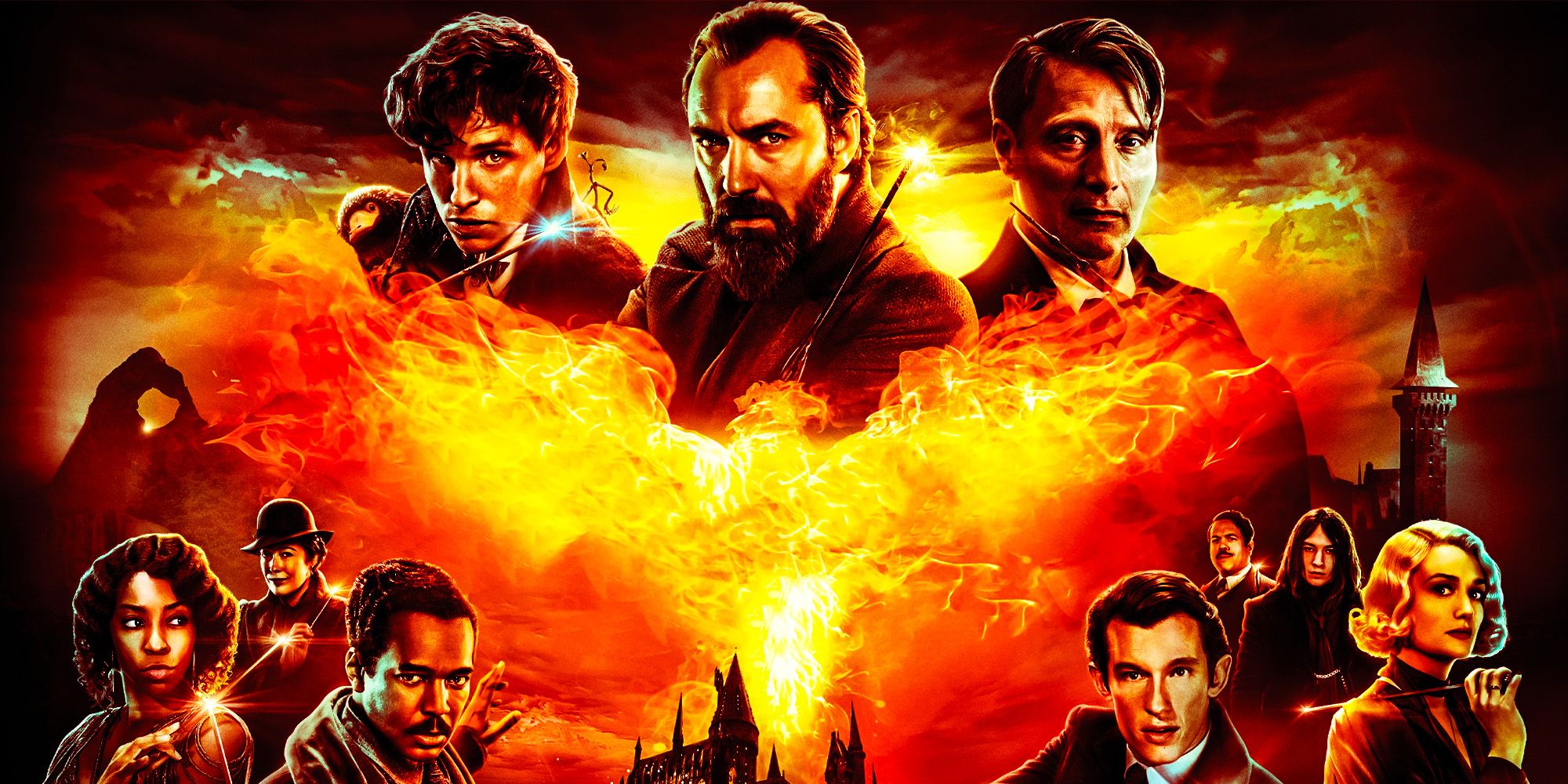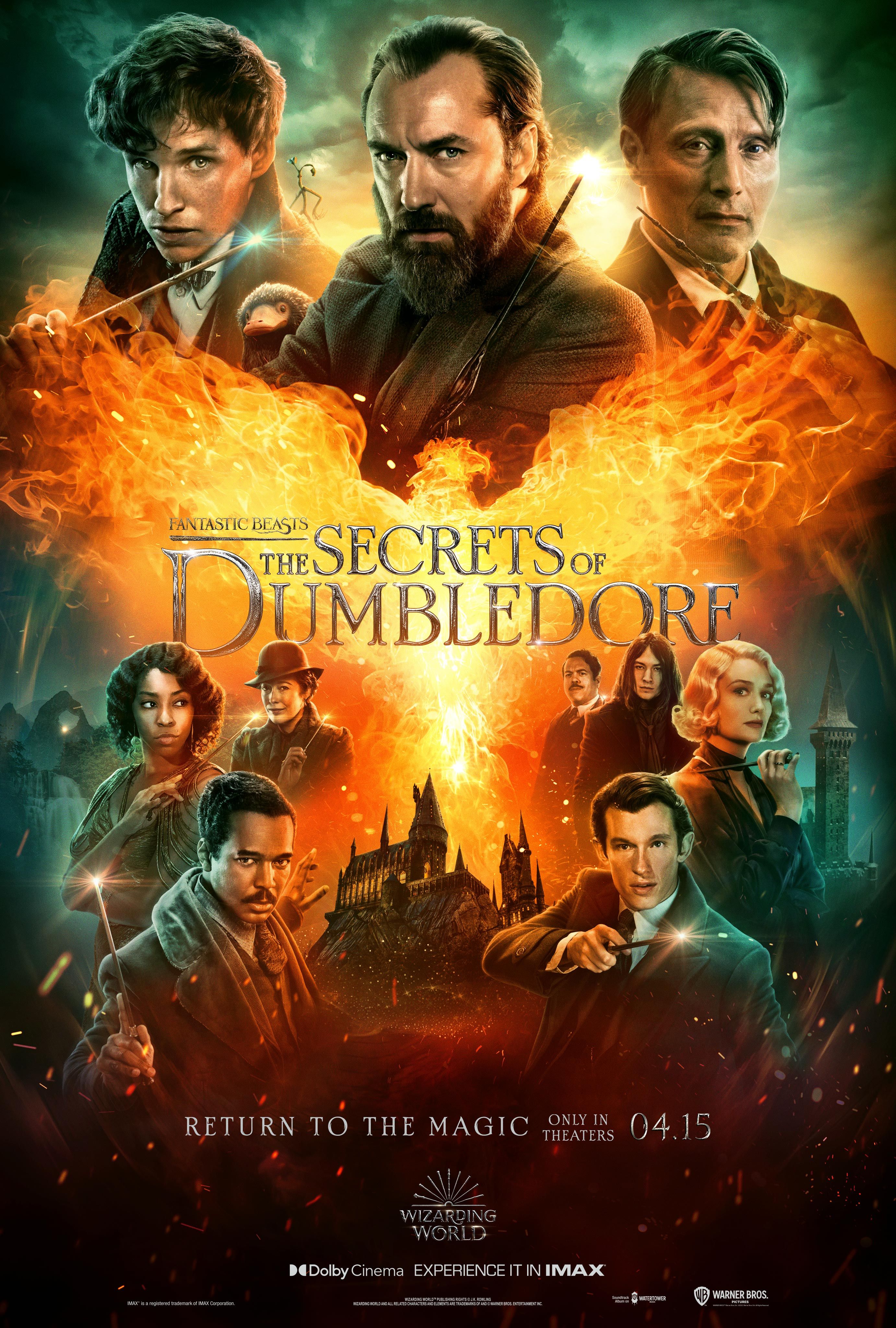Warning: The following contains SPOILERS for Fantastic Beasts: The Secrets of Dumbledore The ending of Fantastic Beasts: The Crimes of Grindelwald transforms the popular prequel series ahead of Fantastic Beasts 3 – and the larger world of Harry Potter – forever. The second entry in this five-film franchise works hard to set up its successive stories and, in doing so, the film tells a complex tale that contains huge ramifications for the wider Wizarding World. Here's Fantastic Beasts: The Crimes of Grindelwald's ending explained and how it sets up Fantastic Beasts: The Secrets of Dumbledore.
Leading up to The Crimes of Grindelwald's ending, tensions grow between the young Albus Dumbledore (Jude Law) and the dark wizard Gellert Grindelwald (Johnny Depp/Mads Mikkelsen). The latter has resumed his quest to dominate the magical and non-magical worlds, but he still fears the powerful Hogwarts professor that refuses to openly oppose him. Caught up in their Machiavellian schemes are Newt Scamander (Eddie Redmayne), Tina and Queenie Goldstein (Katherine Waterston and Alison Sudol), Jacob Kowalski (Dan Fogler), and a host of Newt’s beloved creatures.
Fantastic Beasts: The Crimes of Grindelwald's reviews have been mixed, with many critics discussing the overabundance of plots and a large amount of exposition contained within. Yet this focus on world-building doesn’t detract from several shocking revelations which are sure to have people gasping aloud, like the idea of Credence being Dumbledore's brother. Indeed, there is quite a lot to unpack from The Crimes of Grindelwald, which sets up a new and unexpected status-quo for the Fantastic Beasts saga.
Credence Is Aurelius Dumbledore
The most shocking aspect of Fantastic Beasts: The Crimes of Grindelwald's ending is its final scene when Grindelwald finally reveals Credence’s identity inside his fortress at Nurmengard (which later became prison). It transpires that Credence Barebone is the long-lost brother of Albus Dumbledore: Aurelius Dumbledore. Grindelwald gifts a wand to the furious young man, who shoots a spell with such awesome power that it destroys a mountainside.
There’s a lot to consider in light of Fantastic Beasts: The Crimes of Grindelwald's ending. The first and most obvious counterargument to Grindelwald’s claim, is that the dark wizard is lying about Credence’s identity to recruit him to his cause. After all, there’s no mention of Aurelius Dumbledore in the Harry Potter books or Pottermore. Indeed, the famous Headmaster is specifically mentioned as having one brother and one sister: Aberforth and Ariana respectively. Plus, when Queenie is seen at the French Ministry of Magic earlier in the film, Grindelwald’s follower Abernathy (Kevin Guthrie) can be made making a discreet exit. It’s clear that he has been tampering with the Ministry’s records to lead Credence and his pursuers back to Grindelwald, but Abernathy could have removed some vital clues about Credence’s heritage in the process. This seems increasingly unlikely, especially after Credence’s “birthright” as a Dumbledore is confirmed in the same scene (more on that later). But even if Credence isn't Dumbledore's brother, that only poses more questions.
The Dumbledore family history is particularly tricky to navigate since a great many of its details remain unknown. What is known is that Percival Dumbledore (Albus' father) was sent to Azkaban in 1890 for attacking the muggle boys who tortured Ariana, and presumably died there. Dumbledore’s mother, Kendra, was accidentally killed by Ariana in 1899, mere months before she too, lost her life in the duel between Aberforth, Albus, and Grindelwald. In Fantastic Beasts, Credence is thought to be around 18 years old. Unless his age is eventually retconned, it’s doubtful that Credence/Aurelius was conceived by Kendra and Percival. This means that he’s likely to be Albus’s half-brother, possibly from another one of his parent’s relationships. However, this plot point is finally tied up in Fantastic Beasts 3's ending – he's Aberforth Dumbledore's illegitimate child.
It’s hard to consolidate Aurelius Dumbledore into the existing Harry Potter canon, especially since, in light of her recent revamp of Professor McGonagall’s history, J.K. Rowling is clearly willing to alter her stories to suit new installments. Now that Fantastic Beasts 3 has provided more clarity, future additions to the franchise will show us where Credence truly fits in Harry Potter lore.
Who Dies At The End Of Fantastic Beasts 2 And Why?
Leta Lestrange dies in Fantastic Beasts 2's ending for this reason. Due to her father’s dark reputation as a rapist, Leta Lestrange stands apart from the rest of the wizarding world. This is further compounded by the guilt she feels for inadvertently killing her half-brother Corvus. This occurred during their exile to America, where Corvus was set to live with Mary Lou Barebone (Samantha Morton). After becoming tired of his crying, Leta switched Corvus with another baby when their nanny wasn’t looking, but Corvus – and the mother of their replacement baby – drowned after their ship sunk.
Leta reveals the tragic tale to Newt and his friends shortly before they infiltrate Grindelwald’s meeting. Yet their foe soon springs his trap and begins persuading the film’s primary cast to his cause. Moreover, immediately after Queenie and Credence enter Grindelwald’s magical circle and disapparate, the renegade wizard begins appealing to her resentment and her alienation from wizard-kind. Leta appears to join with Grindelwald, before she swiftly turns on him, presumably to make amends for her past mistakes. Sadly, Leta dies in Fantastic Beasts 2's ending and is consumed by Grindelwald’s enchanted fiery ring. But, in doing so, she buys Newt and company time to evade the dark wizard’s flaming wrath.
What Happens At The End of Fantastic Beasts 2?
Leading up to Fantastic Beasts 2's ending, Newt, Jacob, Tina, and Queenie reunite in Paris and begin searching for Credence Barebone (Ezra Miller), who has survived the events in New York and has taken refuge in a circus. But they are not the only ones searching for the young Obscurial. The collective Ministries of Magic wish to eliminate the threat that he poses. Yusuf Kama (William Nadylam) seeks retribution against Credence, believing him to be the son of an infamous member of the Lestrange family. And Gellert Grindelwald craves Credence’s power, and longs for it to be directed at the only threat to his reign of terror: Albus Dumbledore.
Each group pursues its own line of inquiry. Yet when all parties arrive at Grindelwald’s hidden rally of followers in Fantastic Beasts 2's ending, it becomes clear that he has manipulated them and that they’ve walked into a trap. The over-zealousness of the various Law Enforcement Squads plays into Grindelwald’s plot, and the situation swiftly escalates. The congregation soon leaves to gather even more witches and wizards for Grindelwald’s cause, but their leader gives Newt and company a persuasive ultimatum in Fantastic Beasts 2's ending: join him or die.
Credence and Queenie chose to go with Grindelwald, while Leta Lestrange dies to allow the rest to escape, with Nicolas Flamel leading the heroes in stopping Grindelwald. Fantastic Beasts 2 ends very loosely. Newt and Albus reunite at Hogwarts, just Grindelwald discloses a jaw-dropping revelation about Credence Barebone’s real family, the Dumbledores!
Why Queenie Goes With Grindelwald
Fantastic Beasts and Where to Find Them depicted 1920s America as a particularly tense time for the magical and non-magical communities. No-Maj’s are forbidden from discovering anything about the wizarding world, and strict segregation is maintained by the American Department of Magical Law Enforcement. Despite this, Queenie and Jacob fell in love during their adventures with Newt. They managed to continue their relationship up to Fantastic Beasts 2's ending, even after Jacob’s memory was modified by Frank the Thunderbird in the first film’s climax, although Jacob has begun to fear what reprisals Queenie would face if they were discovered.
Fantastic Beasts: The Crimes of Grindelwald's ending explains Queenie's increasingly desperate attempts to stay with Jacob. She puts him under a spell to make him more compliant, takes them abroad, and pushes for the two of them to get married. When Newt breaks the spell and Jacob criticizes her extreme approach, Queenie departs to find Tina in France. In Paris, however, she stumbles across Grindelwald, who tempts her with the promise of a life free from MACUSA’s interference.
As such, Queenie joins Grindelwald at the end of Fantastic Beasts 2, believing that his triumph against the Statute of Secrecy will allow her to marry Jacob. It’s an ironic turn of events since Grindelwald’s contempt for muggles remains barely concealed. Jacob recognizes this and refuses to go with her, forcing an even larger rift between the star-crossed couple.
Where The Ending Leaves Dumbledore and Grindelwald’s History
One of Fantastic Beasts: The Crimes of Grindelwald’s most controversial aspects was the way that it would "not explicitly" reference Dumbledore’s sexuality or the romance that he shared with Grindelwald in their youth. However, that isn’t to say that their history is totally omitted. After Newt illegally leaves the UK, Dumbledore is interrogated by members of the Ministry of Magic. During the interview, he admits that he and Grindelwald were "closer than brothers," but in true Dumbledore fashion, he evades many of their other questions.
A scene where Dumbledore gazes into the Mirror of Erised provides a closer look at the pair. The device, which shows “the deepest and most desperate desires of one’s heart” depicts the two wizards partaking in a Blood Pact – a new phenomenon in the Harry Potter universe. Though there are plenty of loaded, lingering gazes between them, the relationship between Grindelwald and Dumbledore is left open for interpretation. Luckily, Fantastic Beasts 3 explores their romance in greater detail.
Additionally, whilst the Elder Wand is clearly displayed in the dark wizard’s possession, The Crimes of Grindelwald's ending decides not to refer to Dumbledore and Grindelwald’s lifelong interest in the Deathly Hallows. However, it does unveil new aspects of their shared history.
Why Dumbledore Can't Fight Grindelwald (Yet)
Harry Potter fans know that Albus Dumbledore eventually defeats Gellert Grindelwald in their epic duel of 1945. But with the Fantastic Beasts series charting Grindelwald’s growing power in the mid-1920s, many wonder why one of the most powerful wizards in the world stood idle for so long.
In Harry Potter and the Deathly Hallows, Dumbledore revealed that he had delayed moving against Grindelwald out of fear, not for Grindelwald or his personal safety. Moreover, Dumbledore said that he was racked with guilt over Ariana’s death, and he was afraid that Grindelwald would finally reveal who murdered her in their three-way duel with Aberforth.
However, Fantastic Beasts: The Crimes of Grindelwald's ending gives another reason for Dumbledore’s inaction. The former friends made a Blood Pact in their youth, promising never to fight each other. Proof of that promise exists in the form of an ornamental vial, containing droplets of Dumbledore and Grindelwald’s blood. Grindelwald carries it throughout the movie, until Newt's Niffler steals it during the heat of the final battle.
Though the enchantment seems to act in a similar way to the Unbreakable Vow, it appears that the spell will soon be lifted. By the end of Fantastic Beasts 2, Dumbledore has acquired the vessel and intends to break its enchantment. And though Dumbledore can’t confirm whether his efforts will yield success, people know that he’s going to be triumphant in some way.
Grindelwald Wants To STOP World War II
Midway through his rally in the Lestrange’s tomb at the end of Fantastic Beasts 2, Grindelwald projects a frightening image for his audience to see. Visions of ruined cities appear, with Spitfires circling, and people being led towards trains, before the familiar mushroom-shaped cloud of an atomic bomb looms over the proceedings.
It may be 1927 in this movie, but thanks to his proficiency as a seer, Grindelwald has glimpsed the horrors of World War II. Yet instead of trying to capitalize upon the conflict (as many fictional villains do and indeed Gellert has been implied to do), Grindelwald seeks to prevent it. Calling out the “barbaric” nature of all muggles, Grindelwald claims that wizardkind could lead the lesser race away from this doom if they were in control. It’s a surprising development that shows another side of Grindelwald’s character. He genuinely believes that he will save lives by placing pure-bloods in power over everyone else at the end of Fantastic Beasts 2.
How Fantastic Beasts 2’s Ending Sets Up Secrets of Dumbledore
Even though Dumbledore breaks the blood pact in the ending of Fantastic Beasts: The Secrets of Dumbledore, there’s still some time to go until we see him come face to face with Grindelwald – and Crimes of Grindelwald lays the groundwork. The Fantastic Beasts series still has two more installments planned, which are set to chart the remaining years of Grindelwald’s freedom. In Fantastic Beasts 3, Credence and Queenie are both in full-blown support of Grindelwald's mission. Aurelius Dumbledore is using his Obscurus to fight in the villain's army – shockingly, against his own family. Albus has formed a new team to fight against his foe in the form of Newt, Jacob, Theseus, Ilvermorny Professor Lally Hicks, and Yusuf Kama. Finally, Credence finds out the truth behind his parentage, (and that he's not Dumbledore's brother), which was the main focus of his character's plot throughout Fantastic Beasts 2.
Since Albus breaks the blood pact in Fantastic Beasts 3, Fantastic Beasts 2's ending may have confirmed what tone the epic wizard fight between Grindelwald will have, and how it will occur. Across the Harry Potter book series, the final conflict between the two titans is referred to in hallowed, almost mythic terms. However, in Harry Potter and the Deathly Hallows, Rita Skeeter is interviewed following the publication of her biography on Dumbledore, saying she believes that's not exactly true, speculating Grindelwald surrendered. This could be a result of Grindelwald and Dumbledore's relationship, which is explored further in Fantastic Beasts 3.
Like J.K. Rowling’s characters, fans tended to dismiss Skeeter’s claims as inaccurate and incendiary, which she often was. Despite this, the Fantastic Beasts movies somewhat confirmed Skeeter’s assessment. The series has already touched on the troubled relationship between the pair. Certainly, Fantastic Beasts: The Crimes of Grindelwald also presented both wizards deftly manipulating others for their own gain. With the upcoming movie Fantastic Beasts 3, and these films becoming even more interwoven as they progress, the interplay is sure to become dirtier and – in light of the Aurelius Dumbledore twist – even more personal.
Fawkes Is (Re)born
On the way to Fantastic Beasts: The Crimes of Grindelwald's ending, most of the characters believe that Credence is a member of the Lestrange family, whose emblem is a raven. As such, when Credence is seen caring for a young baby bird throughout the course of the movie, it appears that he has chosen a fitting pet. However, upon finding out that he is a Dumbledore, the chick is engulfed in a blaze of fire, before it transforms into a large red and gold bird – a phoenix.
The significance of this cannot be overstated since – as Dumbledore mentions earlier in the film – these magical creatures are closely connected to his family. Moreover, he discloses that his grandfather was visited by a phoenix in an hour of need. Considering that Credence has been hunted all of the ways through The Crimes of Grindelwald, this is explicit proof that he really is a member of the Dumbledore family. Furthermore, given that phoenixes rarely appear in the Harry Potter saga, and that this specimen is already related to Albus Dumbledore through Aurelius, we can also guess that this is Dumbledore’s future companion Fawkes.
Many have speculated that this popular bird would appear in this animal-centric series. But is this actually Fawkes? How will he eventually align with Dumbledore? And if he has yet to appear, where is he? Again, we can only speculate as to what role phoenixes will play in the Fantastic Beasts series going forward.
What The Twist Means For Fantastic Beasts 3
Fantastic Beasts 2's ending directly sets up the events and revelations in Fantastic Beasts 3. In Fantastic Beasts 2's ending, the team may have escaped with their lives, but Newt’s band of friends is divided at the end of Fantastic Beast: The Crimes of Grindelwald thanks to Queenie’s desertion, and they failed in their mission to steer Credence onto the right path. But thanks to the Credence/Aurelius reveal, it’s obvious where the series will go next. Most of Credence's story revolves around finding his real family in the previous installment, and Fantastic Beasts 3 piggybacks off this twist by actually giving an answer to the question. Yes, Credence is a Dumbledore, but he's not Albus' brother as was suggested. The Obscurial's decisions only heighten the drama as he fights head-on against his family in Grindelwald's cause. Though, Fantastic Beasts 3's ending does redeem Aurelius, because he finally gets the answers he deserves and is able to move on.
People will know the eventual fates of the main players in the Fantastic Beasts franchise (Newt and Tina marry, as do Jacob and Queenie) yet it's hard to guess how the journey there will pan out, knowing that the unpredictable nature of Aurelius Dumbledore has been added. His destiny and his arc have a major bearing upon the Fantastic Beasts saga going forward. Dumbledore and his brother Aberforth rank among the most powerful wizards of their generation – and their abilities do not derive from the addition of a highly destructive Obscurus. As such, Aurelius turns the tide of any battle that he becomes involved in.
Moreover, Credence/Aurelius might be allied with Grindelwald for now, but that allegiance shifts in the same way that Queenie’s did (and will again). This will no doubt rely on what actions Albus Dumbledore makes from now on. Does he know that Aurelius Dumbledore exists? And how will Grindelwald utilize this knowledge (or lack of it) for the greater good? Regardless, Fantastic Beasts: The Crimes of Grindelwald's ending sees its titular villain acquire a dangerous new ally. It is currently unclear which way this story is turning, but J.K. Rowling is sure to illuminate the way in the series' upcoming installments.

